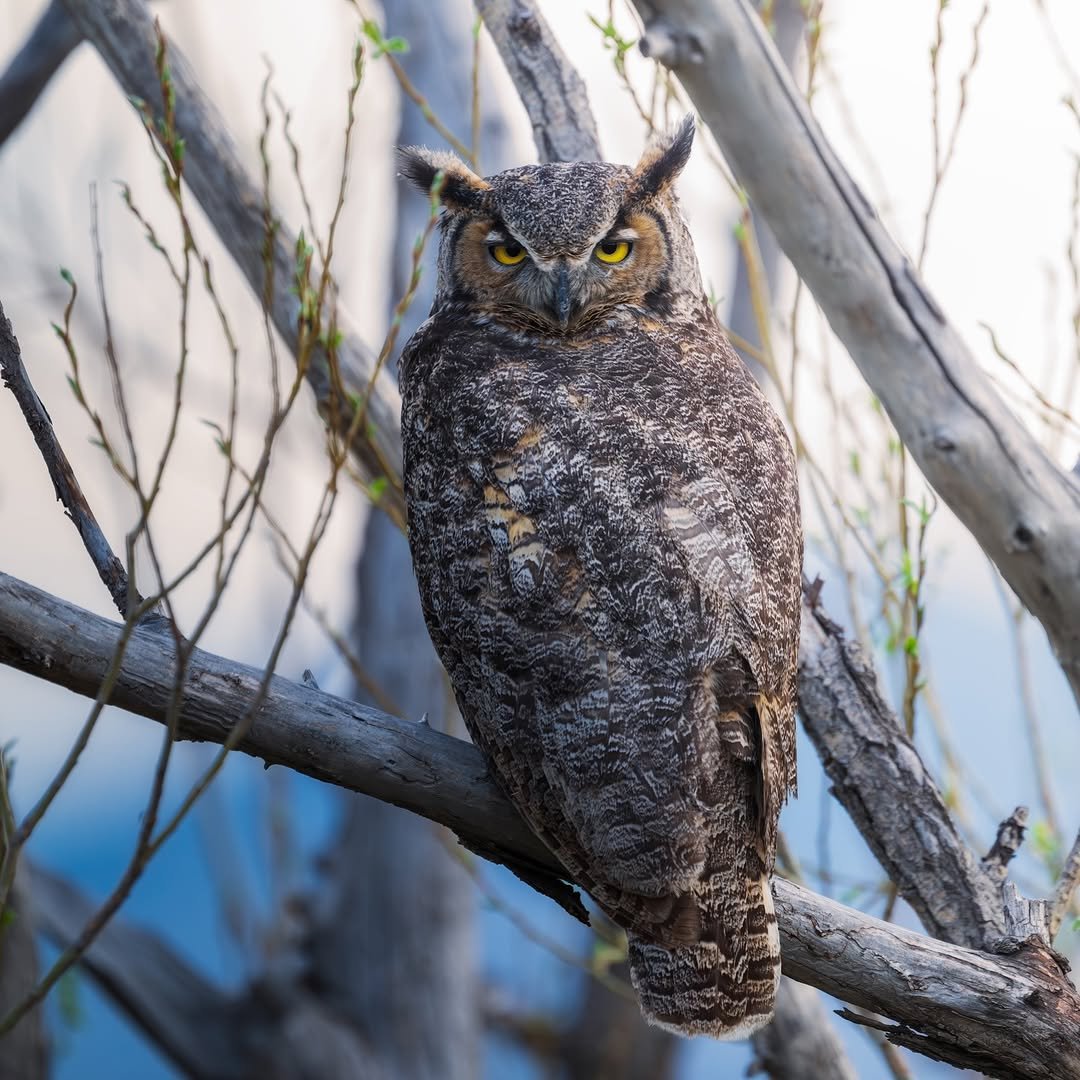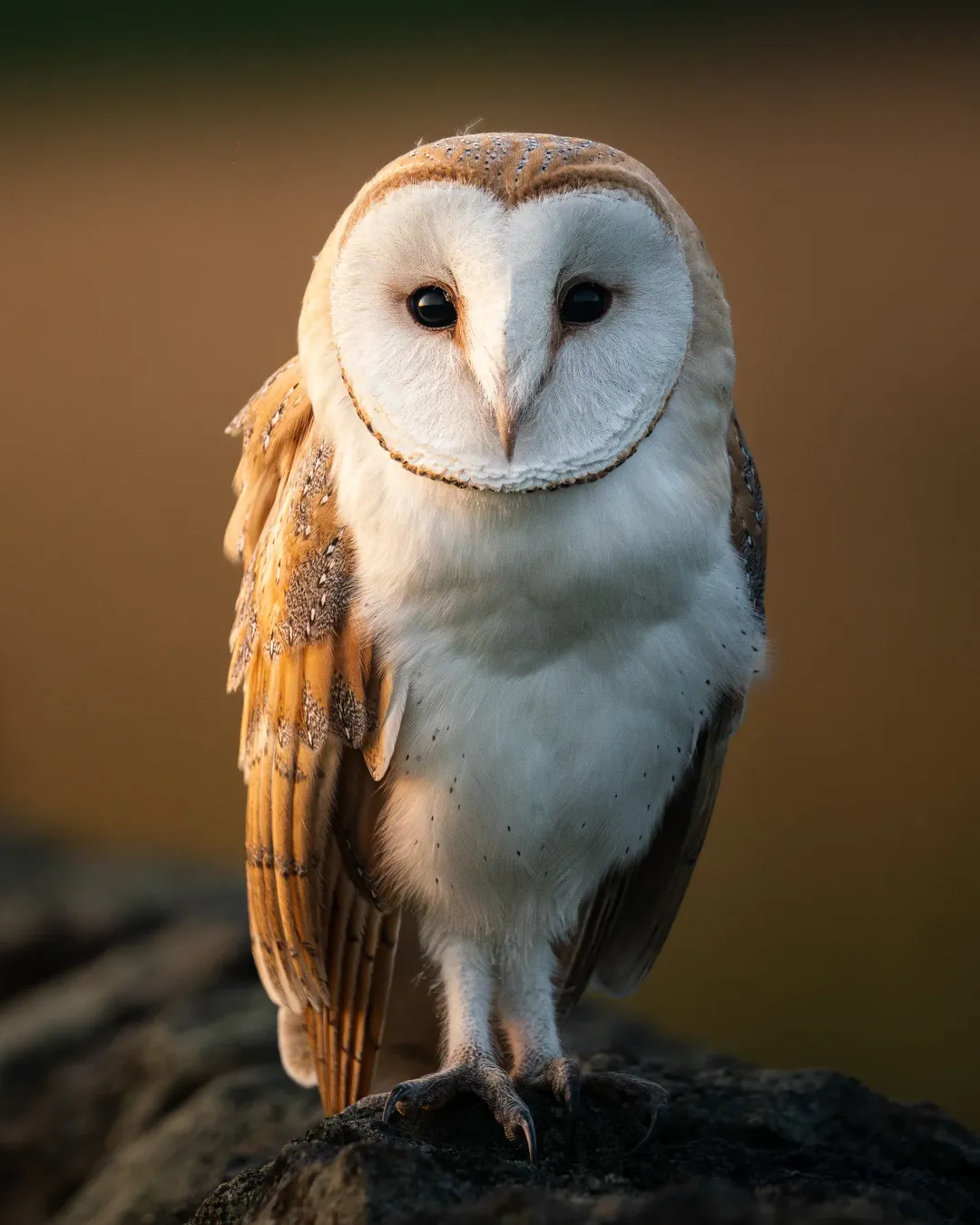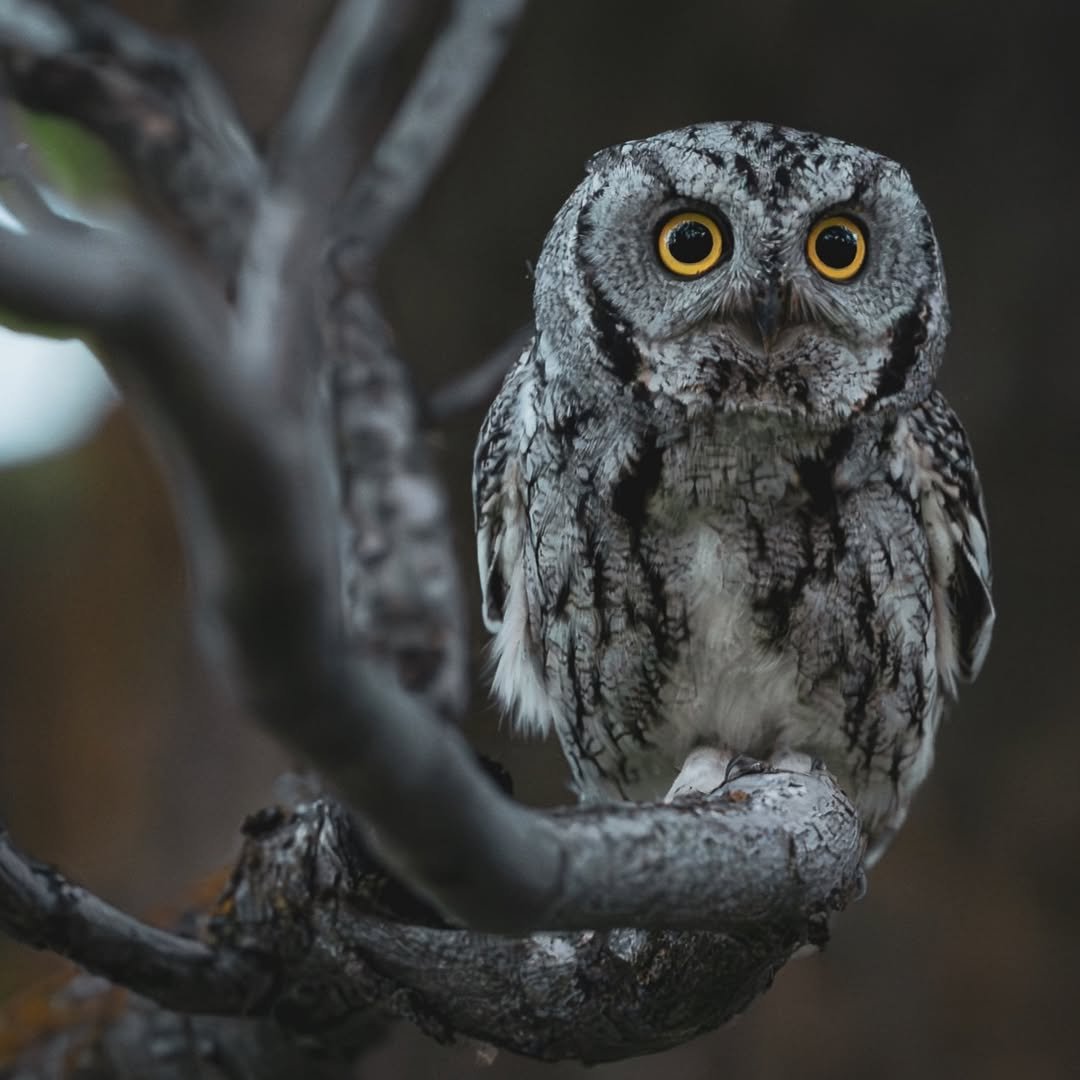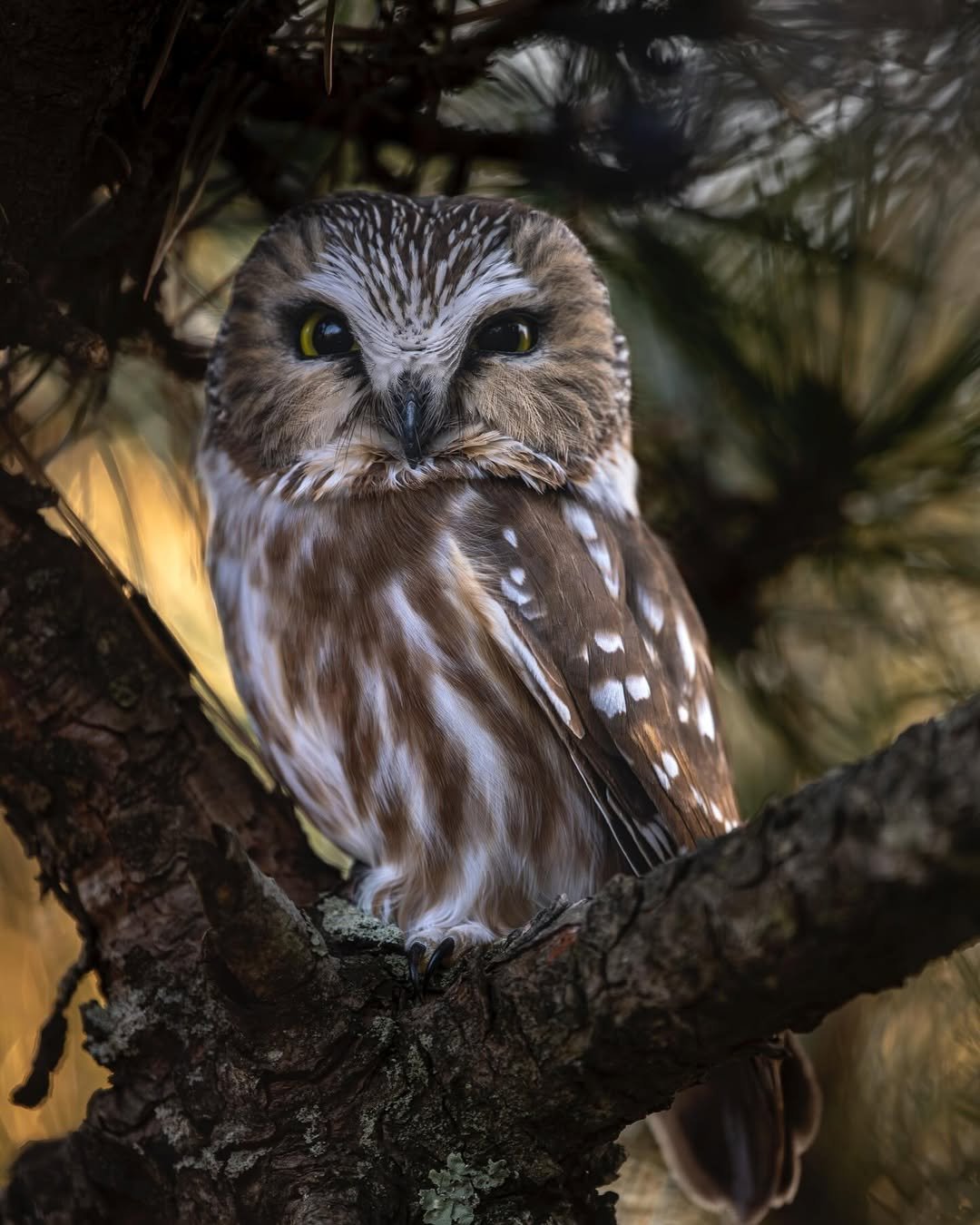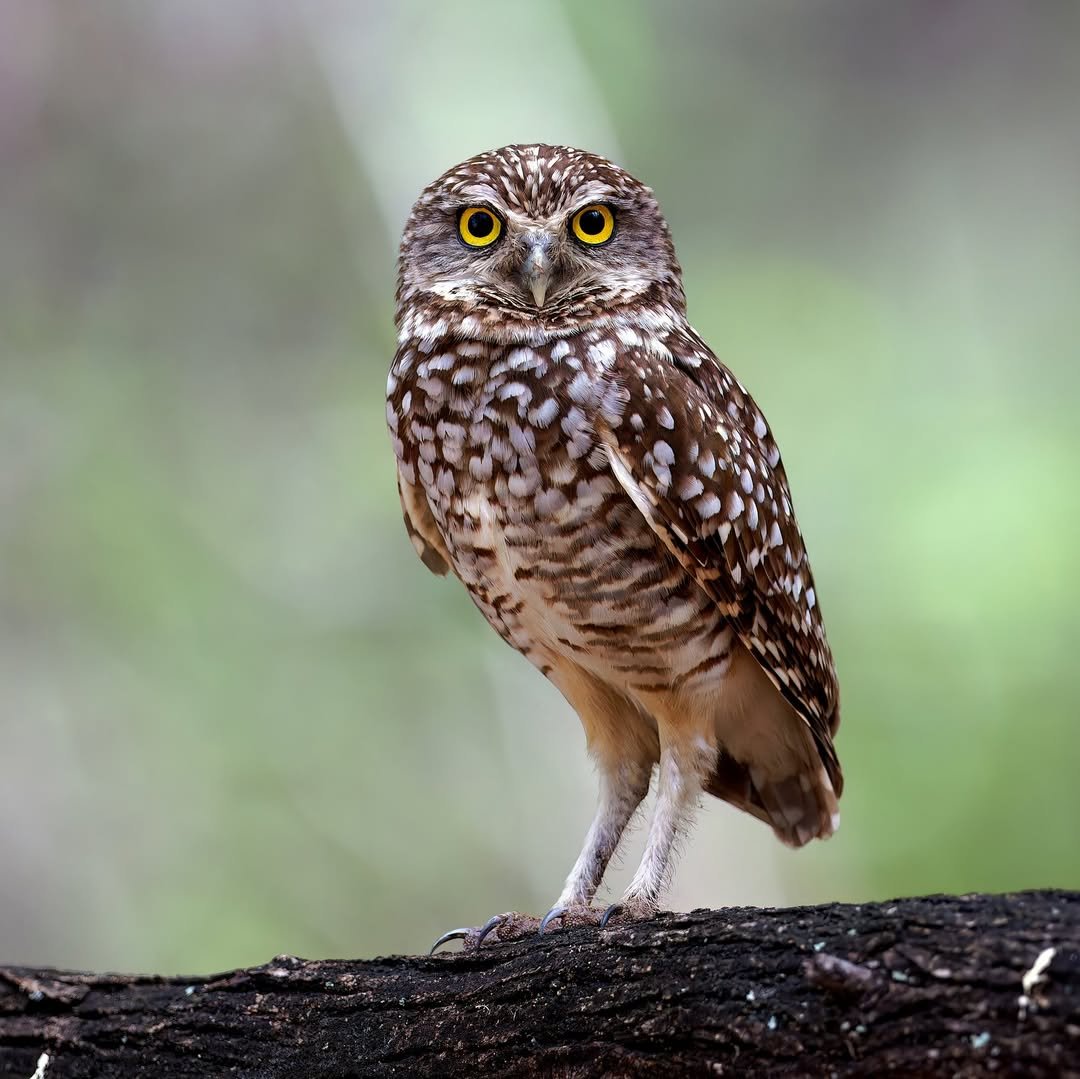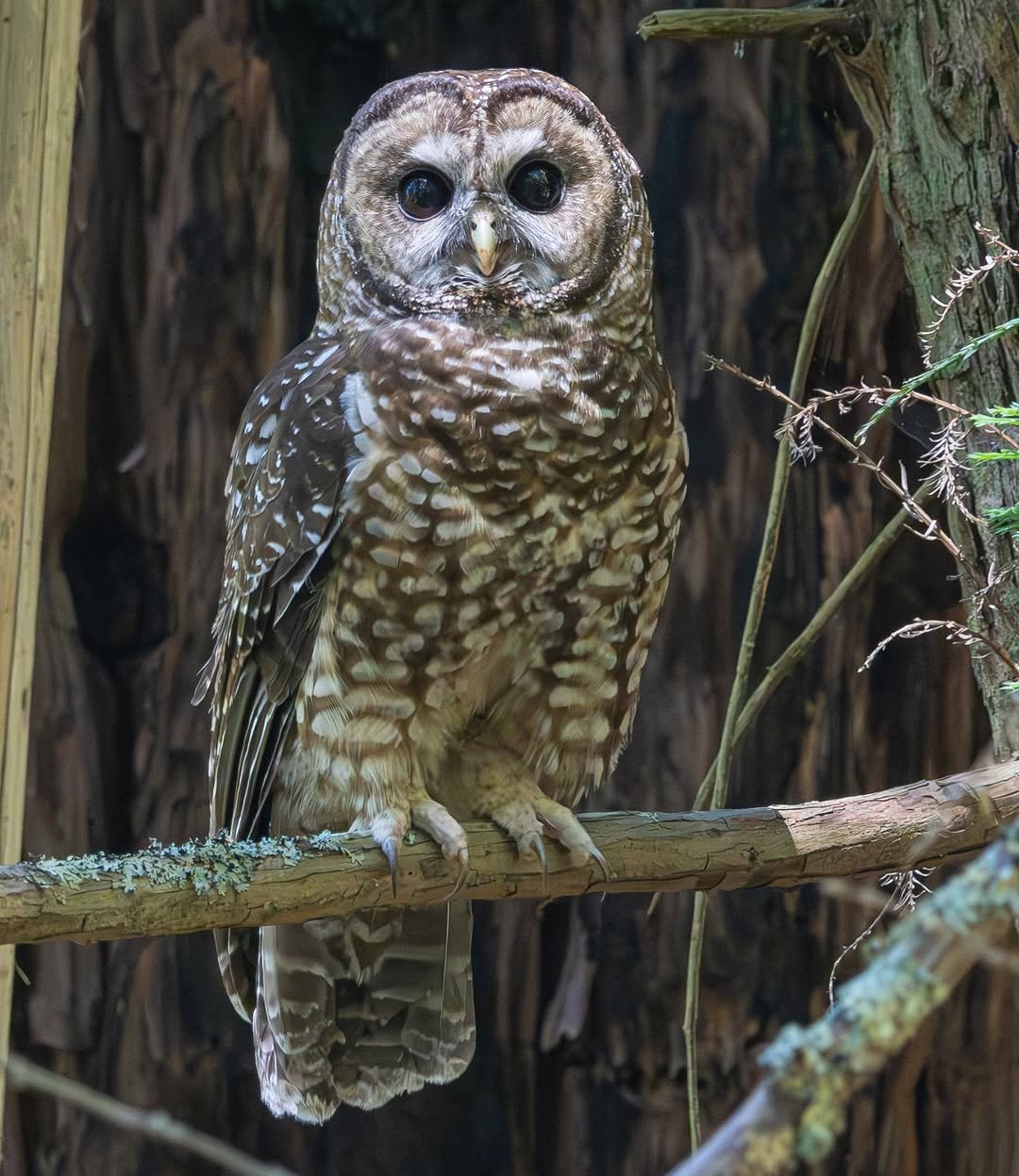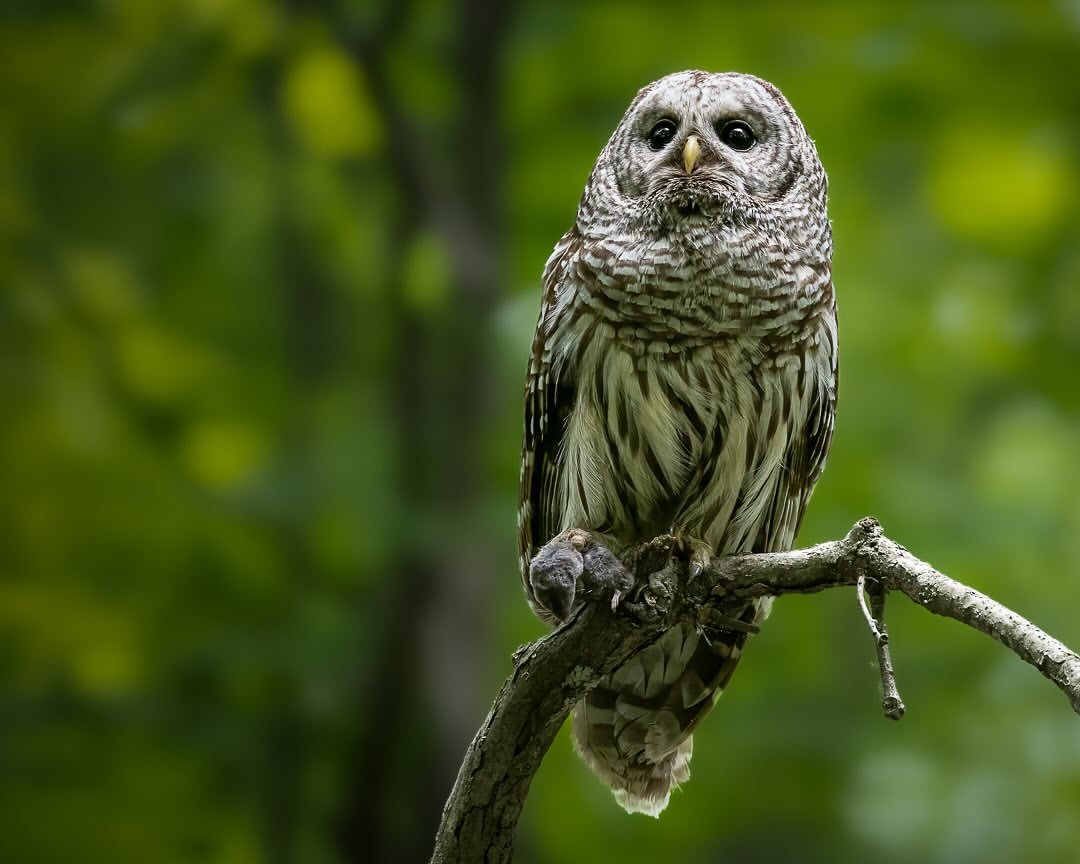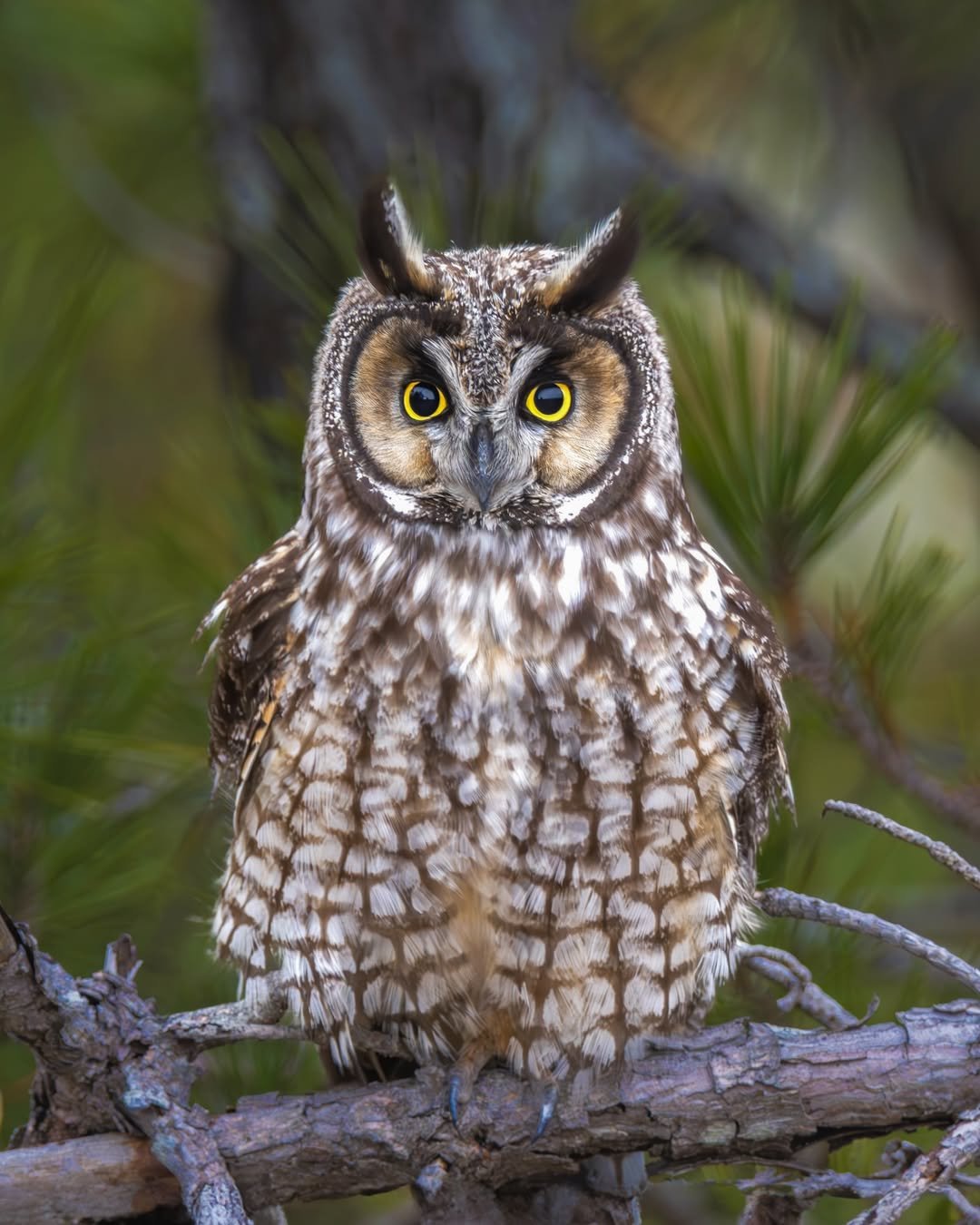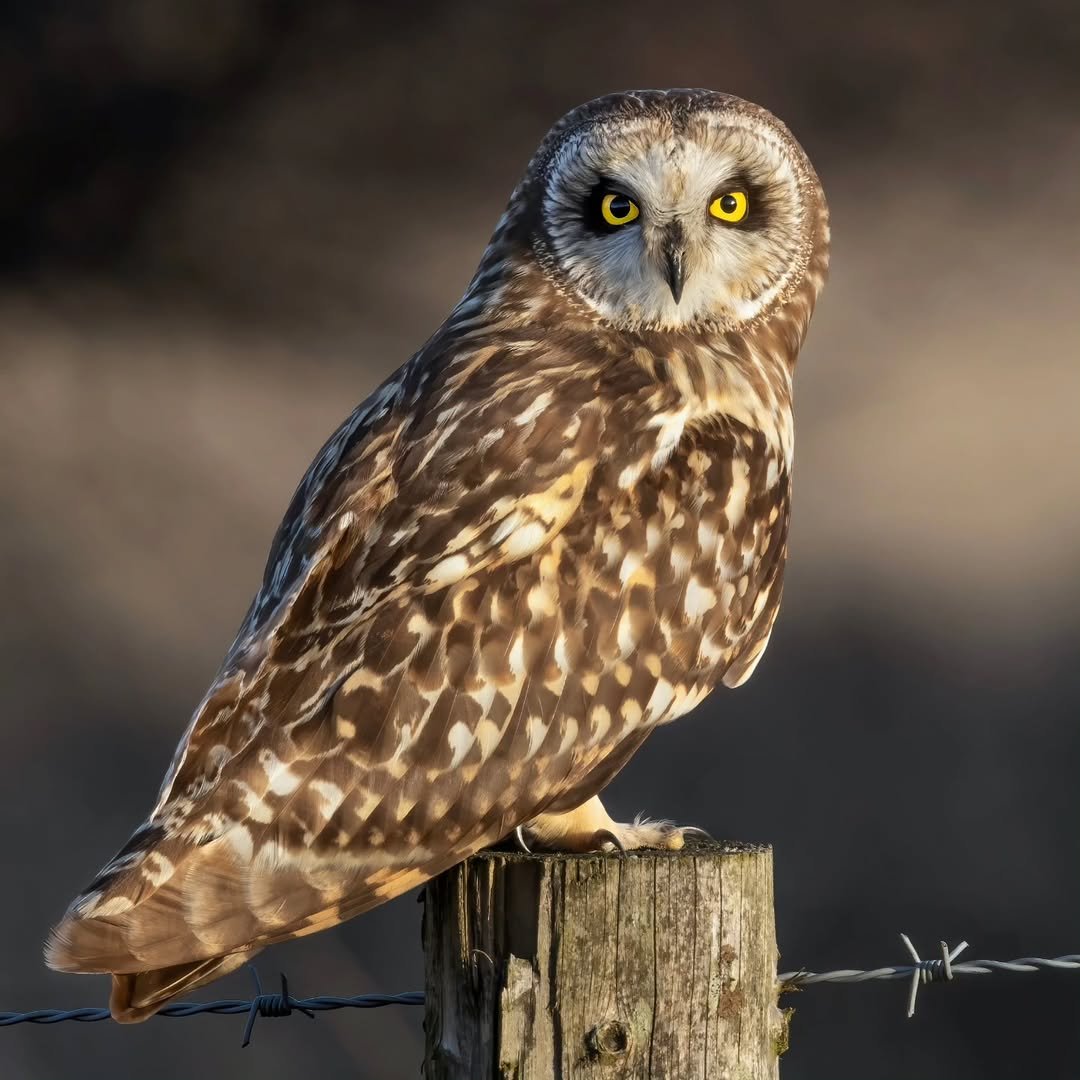10 Owls You Can Spot in
California
By Avian Feathers Team
Published June 2025
Owls might be nighttime birds, but they are never boring. California is home to some of the most fascinating owls in North America. From tiny fluffballs to wide-winged hunters, each one brings something special. Some call from the treetops. Others hide in barns or desert cliffs. A few you will hear before you ever see. Ready to meet them?
1. Great Horned Owl
This is one of the most common and powerful owls in California. Look for big, cat-like eyes and feather tufts that stick up like horns. Great Horned Owls are strong enough to hunt rabbits, skunks and even other birds.
Their deep hoots are classic. You have probably heard them in movies.
Size
Length: 18–25 inches.
Wingspan: 40–57 inches.
Weight: 2–5.5 pounds.
Scientific Name: Bubo virginianus
2. Barn Owl
With a heart-shaped face and ghostly white feathers, Barn Owls look like something out of a storybook. They are quiet flyers and expert mousers. Many farmers welcome them in their barns.
These owls do not hoot like others. Instead, they let out a high-pitched screech that can surprise you in the dark.
Size
Length: 12–16 inches.
Wingspan: 39–49 inches.
Weight: 14–24 ounces.
Scientific Name: Tyto alba
3. Western Screech Owl
Despite the name, these tiny owls do not really screech. Their call sounds more like a soft, bouncing ball. They are small, camouflaged and love nesting in tree cavities.
Sometimes they even use backyard nest boxes. If you hear a gentle trill at night, one might be nearby.
Size
Length: 7–10 inches.
Wingspan: 18–24 inches.
Weight: 3–8 ounces.
Scientific Name: Megascops kennicottii
4. Northern Saw-whet Owl
This owl is adorable with a round face and bright yellow eyes. They are secretive and often hard to spot, even if they are nearby.
The name saw-whet comes from their call, which sounds like a tiny blade being sharpened. You are more likely to hear one than see it.
Size
Length: 7–8 inches.
Wingspan: 16–19 inches.
Weight: 2.3–5.3 ounces.
Scientific Name: Aegolius acadicus
5. Burrowing Owl
Unlike most owls, Burrowing Owls live on the ground. They stay in dry, open areas and nest in old animal burrows. These small owls stand tall, bob their heads and are not afraid to stare you down.
You might even spot one during the day, which is rare for an owl.
Size
Length: 7.5–10 inches.
Wingspan: 20–24 inches.
Weight: 5–8.5 ounces.
Scientific Name: Athene cunicularia
6. Spotted Owl
This shy forest owl has dark eyes and spotted brown and white feathers. Spotted Owls prefer quiet, old forests and are sensitive to disturbance.
Because of this, they have become symbols of wildlife protection in California. Hearing one call in a redwood forest feels magical.
Size
Length: 17–19 inches.
Wingspan: 39–49 inches.
Weight: 1.3–1.6 pounds.
Scientific Name: Strix occidentalis
7. Barred Owl
The Barred Owl has big dark eyes and a call that sounds like “Who cooks for you.” It looks soft and fluffy but is a bold and skilled hunter.
These owls are known to chase away intruders, including people. They are slowly expanding their range into California.
Size
Length: 16–25 inches.
Wingspan: 38–49 inches.
Weight: 1–2.5 pounds.
Scientific Name: Strix varia
8. Long-eared Owl
Long-eared Owls have tall feather tufts and orange eyes that seem to glow. They prefer dense woods near open spaces for hunting.
During the day, they roost in thick trees and sit very still. Their camouflage is so good you might walk right past one without noticing.
Size
Length: 13–16 inches.
Wingspan: 35–40 inches.
Weight: 7.5–15 ounces.
Scientific Name: Asio otus
8. Short-eared Owl
These owls live in open places like grasslands, marshes and coastal plains. You might see them flying low at dusk or dawn with a fluttery, moth-like style.
Their ears are hard to see, but their round face and bright eyes stand out. They are one of the few owls you can see during the day.
Size
Length: 13–17 inches.
Wingspan: 33–43 inches.
Weight: 7–17 ounces.
Scientific Name: Asio flammeus
10. Northern Pygmy-Owl
This owl is small but fierce. It hunts during the day and often catches birds nearly its own size. With bright yellow eyes and a fearless attitude, it is a forest predator packed into a tiny body.
You may hear small birds making a fuss, they often mob this little owl to protect their nests.
Size
Length: 6–7 inches.
Wingspan: 14–16 inches.
Weight: 2–2.5 ounces.
Scientific Name: Glaucidium gnoma
From the tiny, fierce Northern Pygmy-Owl to the powerful Great Horned Owl and the elusive Spotted Owl, California offers unparalleled opportunities to witness these captivating nocturnal hunters. Whether they’re silently swooping through moonlit forests, perched stoically in urban parks, or even nesting in old animal burrows, owls are a truly enchanting sight for birdwatchers and nature enthusiasts alike.
Their hushed flight, piercing gazes, and unique calls, from the classic “Who cooks for you” of the Barred Owl to the surprising screech of the Barn Owl, make them unforgettable.
Where to Spot Owls in California
From towering mountain ranges to vast stretches of coastline, California provides exceptional habitats where diverse owl species can be observed in the wild. Here are some top locations and habitat types to increase your chances of spotting these captivating nocturnal hunters:
- Forests & Woodlands: Look for Great Horned Owls, elusive Spotted Owls (e.g., Sierra Nevada, Redwoods), Barred Owls, and the tiny Northern Pygmy-Owl. Listen for Northern Saw-whet Owls and Western Screech-Owls.
- Open Lands: Find Barn Owls in farms, Burrowing Owls (often during the day) in grasslands (like the Salton Sea), and Short-eared Owls in marshes.
- Urban/Suburban: Even in cities, Great Horned Owls and Barn Owls can be found in parks and green spaces.
Owls are all around us, even if we do not always see them. Have you heard or spotted one in your area?
Let us know which owl you have seen or hope to see in California.

